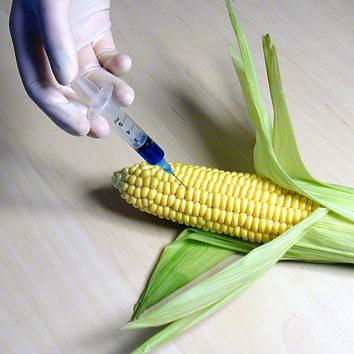Genetically Engineering (GE) Food
 |
| Illuminating9_11. "GMO%20CORN". 5/21.2009 via Flickr. Attribution-NoDerivs 2.0 Generic License. |
The URL suggests that this source may be credible because
the “.org” states this this information is from an organization as opposed to
being for commercial use. However, the online magazine is published by The
Restored Church of God, which I believe influences the perspective and bias of
the information presented.
The Real Truth website does not present a specific author of
the article. By not giving an author, it raised suspicion on the credibility on
the information in the article, as there is no way to determine the
qualification of the writer.
The website does not present a date of publication, nor a
last updated date. There are no hyperlinks in the article, and the only links
present open up note boxes that include bible verses. However, the article does
make reference to where it pulled its data from, allowing the reader the
ability to follow up.
The purpose of this article is to inform the reader on what
the genetically engineered food controversy is about. However, the article is
written biased against the genetic engineering of food, making its claims less
objective and therefore, less trustworthy.
The article from Real Truth does use graphics, particularly
graphs and charts that display statistics. I believe that the graphs are used
to build credibility, but statistics are easy to manipulate and with the obvious
bias present in the article, I think the graphs are used more to further the
writer’s claim against GE.
If the bias in this article is able to persuade the readers
against GE of food, the companies who profit from genetic engineered food would
lose profit. I think the writer thinks that the reader’s health will benefit
from not consuming the altered food.
Compared to the previous website, at first glance the URL
makes this site look less reliable, however, Scientific American is a popular website
because of its factuality and attention to details. Therefore, the audience and
motive behind the website makes this source more reliable than the last.
The author of this article is clearly stated at the top of the
article as Pamela C. Ronald. Dr. Ronald received her Ph.D. from UC Berkeley,
and teaches in the Department of Plant Pathology and the Genome Center at UC
Davis in addition to being the Director of the Institute for Food and
Agricultural Literacy. All of her education and experience makes her qualified
to talk about genetically engineering plants.
Scientific America gives May 1st, 2014 as the
date of publication, and no updated date is given.
The purpose of this article is to inform the reader on the
benefits that genetically engineered food can have for the consumer. Also,
unlike the last article, Scientific American, does not present both sides of
the controversy—they only help their side.
Minus a single picture in the top of the article, Scientific
American includes no relevant picture. I saw relevant because the picture they
did include does not add anything to their defense. The graphics portray no statistics,
graphs, or charts or even graphic do draw emotion from their readers.
This article is very biased for genetic engineering of
plants. This bias is present by the author being a scientist who conducts this
research, instead of a reporter, and the only evidence presented is in favor of
GE.
No comments:
Post a Comment